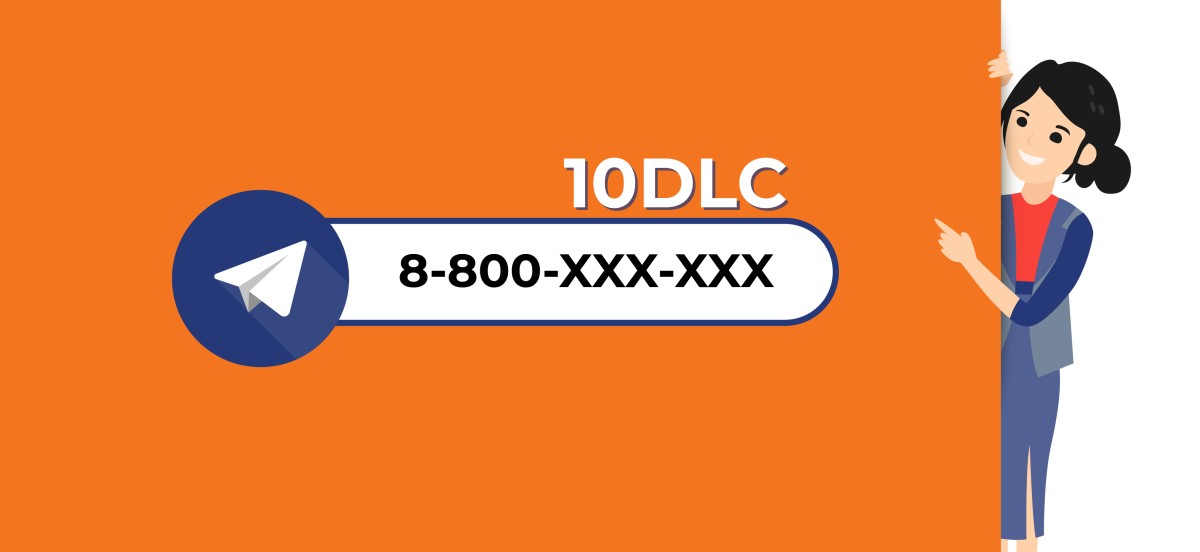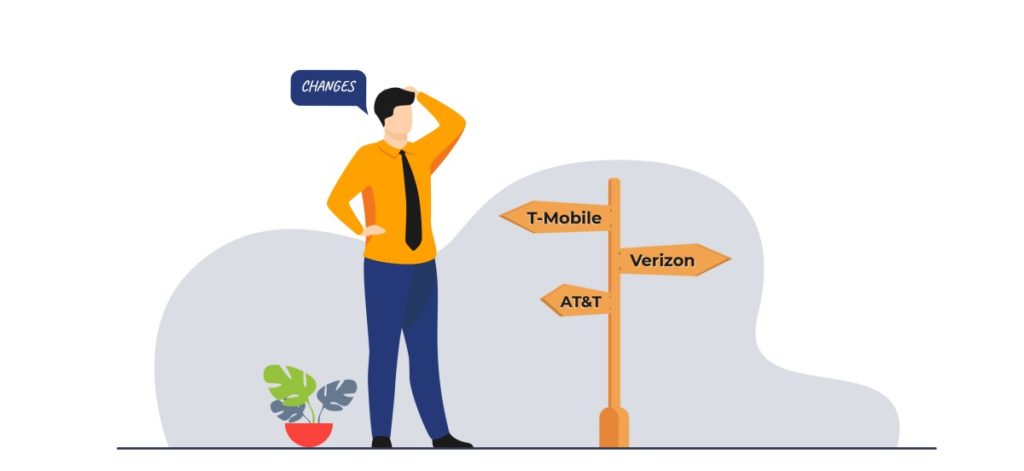
There are some changes happening to the landline texting industry that include updates to a few regulations on business texting that professionals should be aware of.
These changes are mostly still happening behind the scenes, but businesses who send text messages to people in the United States should prepare to hear about new registration requirements for their SMS and MMS campaigns and new messaging surcharges. Users who have AT&T and T-Mobile will notice the most changes.
Text My Main Number is dedicated to helping clients through this interesting transition. In this post, we’ll explain these changes and what we know so far.
Know the lingo: What is the A2P 10DLC program?
10DLC is short for “10-digit long code.” It is a type of messaging that allows businesses to send a large number of SMS messages from a local phone number. The 10DLC program was originally intended for person-to-person (P2P) traffic, but businesses using application-to-person (A2P) messaging have also been using the 10DLC option. One alternative to 10DLC is an SMS short code, which is a five-digit number, according to an article by Tatango CEO Derek Johnson. Another alternative to 10DLC are toll-free numbers, which have higher throughputs.
The program has a higher throughput rate compared to SMS short codes. That means you can send more messages per minute with 10DLC.
All major cell phone carriers (Verizon, AT&T, and T-Mobile) offer a 10DLC messaging option, but each carrier is structuring its new registration process a little differently, if at all.
Why are the landline texting changes happening?
In an effort to hold businesses accountable and control any spam messages sent through 10DLC, carriers are requiring that businesses register their texting campaigns beforehand.
Carriers are also announcing additional fees in exchange for offering a higher throughput cap that enables high volumes of messaging. The fees and registration requirements will be different based on which carrier you work with.

Here’s how the changes will affect A2P messaging:
Businesses who send messages with an A2P program will need to register their texting campaign and pay additional fees to have access to the 10DLC program. They can continue using their existing phone number to send messages, but they will need to be registered to continue using the program and avoid having their messages filtered out.
Messages that are sent via shared short codes will need to use either 10DLC or a dedicated short code, according to information from OpenMarket. Carriers will require most messaging sent via shared short code to migrate to either 10DLC or a dedicated short code to reduce the risk of spam messaging. A dedicated short code is more expensive, but has a higher carrier support for larger campaigns, according to OpenMarket.
If you own a small business or independent contractor, you may not need to complete the same registration process if you do not send a very large amount of text messages, according to Twillio.
These changes will not directly affect short codes or toll-free numbers. Shared short codes will be banned beginning June 1, 2021. Also, messaging to other countries, including Canada, will not be affected by these changes.
Changes vary based on the carrier
Verizon previously added a per-message surcharge to outbound SMS and MMS messages but has not announced plans to adopt a brand or campaign registration process. They have been using spam and smashing filters to vet A2P 10DLC users since early 2019, according to a blog post by OpenMarket.
AT&T is starting a class-based structure with different surcharge amounts for each class. It will 10DLC on April 1, 2021 and expects all brands to register their campaigns by June 1, 2021, according to Twillio. Message charges will include the base message rate and the surcharge to the destination carrier, according to Bandwidth.
T-Mobile is expected to introduce a new activation or migration fee, flat-rate surcharges for each brand rather than each campaign. T-Mobile also has specifications for types of messages and has daily caps for the number of outbound messages per brand, according to a blog post by Bandwidth.
Here’s why landline texting users should care about the changes
These changes are meant to help protect consumers from unwanted spam messages and to help sustain higher data caps for A2P messaging. This could mean the public will have more trust in text message campaigns and be more willing to participate with business texting.
Carriers are using additional firewalls to block unsanctioned 10DLC users, so you will want to be sure your brand and campaign are properly registered to ensure your customers receive your messages and you aren’t subject to higher surcharges than necessary.
Short codes, which have been used by many businesses in the past, have a high risk for spam, according to Open Market. Spam in general can erode public trust and make texting campaigns seem less legitimate.
How do you register your 10DLC campaign?
Many people can register their campaign directly through The Campaign Registry (TCR), which is a third-party company contracted by carriers to handle the campaign registration and vetting process. The registration process is meant to give carriers more information about who is sending mass messages and the type of message being sent. SMS service providers can register 10DLC campaigns for the brands they work with.
Text My Main Number will help its customers register to ensure they receive the best possible rates, throughput rate, and service continuity.
If you do not register your campaign, but continue using the 10DLC program, you may be charged higher fees or your messaging traffic may get blocked by the carrier.
To register, you’ll have to provide some basic information about your brand and your campaign. You’ll also be asked to describe the campaign and provide a few sample messages, according to Bandwidth. It’s important to give complete and accurate information during the registration process because each brand and campaign will be assigned a Trust Score. You will receive a message throughput based on your Trust Score and what type of campaign you registered, according to Twillio.
